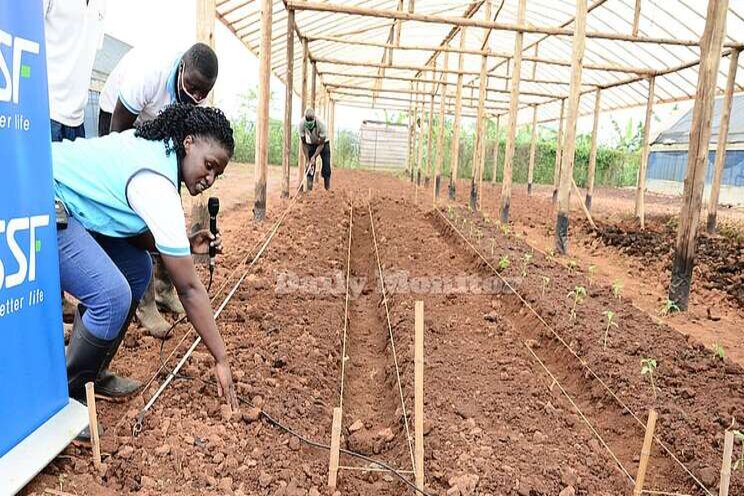Greenhouse: A must-have for commercial vegetable growing
Added on 16 February 2021

Doreen Nampamya, a research associate with the Korea Program on International Agriculture (Kopia), Uganda explains that the traditional way of growing vegetables in open fields is related to crop failure due to the adverse climatic condition.
Nampamya says growing vegetables using greenhouse technology is profitable in the long term and can address pest and disease management challenges.
Management
Nampamya says that greenhouse technologies are a form of protected agriculture aimed at addressing limitations of open-field cultivation. The plants are cultivated in sheltered structures covered by a transparent, material. The main purpose of greenhouses is to provide favourable growing conditions and to protect crops from unfavourable weather and various pests. The covering materials can include polyhouse, fibre reinforced plastic house and glasshouse. A greenhouse can be made locally using materials such as eucalyptus trees for support provided it is well sheltered from waterlogged and places prone to strong winds.
"Site selection should not be a big challenge since you can modify everything including bringing in soils," Nampamya says. Since plants growing in a greenhouse require different conditions, farmers have to seek technical information from agronomists, according to Nampamya.The greenhouse should be properly ventilated to enable optimum crop performance . The vent of the structure should be oriented in the direction that the wind is coming from.
Water supply
An adequate water supply is needed for irrigation, pesticide application, evaporative cooling, growing media preparation and cleaning. This is managed by adopting low usage irrigation systems. This can be done by drilling wells or rainwater harvesting. Nampamya recommends testing water at a laboratory equipped to test water for irrigation purposes on pH and alkalinity. But reclaimed water, runoff water, or recycled water may require reconditioning before use for irrigation since disease organisms, soluble salts and traces of organic chemicals may be present. She says that one should use filtration to remove suspended solids from water to prevent clogging of piping, valves, nozzles and emitters in an irrigation system.
Irrigation
Crops in a greenhouse are irrigated by applying water and nutrient solution through drip tubes, by manually using a hose, overhead sprinklers or sub-irrigation. Drip irrigation, she says, is the most efficient for greenhouse applications. A simple solar-powered irrigation system can cost about Shs3m.
Growing media
Sometimes, Nampamya says, a farmer may decide to use growing media including soilless ingredients such as peat moss, vermiculite, composted bark or other composted materials when field soils are unsatisfactory.
Growing media are designed to achieve high porosity and water retention while providing adequate aeration.
Pest management
Nampamya explains that before introducing a crop into a greenhouse, weeds, algae as well as pet plants, should be removed. Problems arising from drainage should be taken care of. A farmer should thoroughly wash hands or wear disposable gloves in case of handling plants suspected of being diseased to avoid spread of pathogens.
Yellow sticky cards should be at hand to monitor flying pests in the greenhouse. These should be reviewed weekly.
Photo: A greenhouse made with local materials at Kawanda for vegetable production. Credit:GEORGE KATONGOLE
Source: Daily Monitor
Source: Daily Monitor
More news















